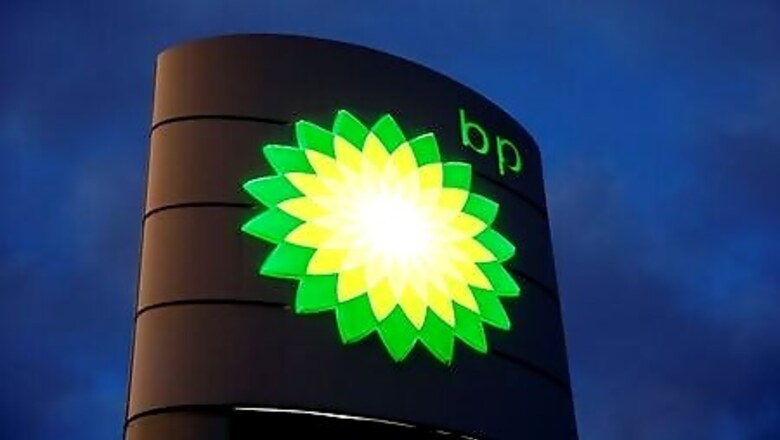
views
LONDON BP cut its dividend for the first time in a decade after a record $6.7 billion second quarter loss when the coronavirus crisis hammered fuel demand and it sought to win over investors by speeding up its reinvention as a lower carbon company.
Its shares rose 6% in early trading on Tuesday.
All major oil companies suffered in the second quarter as lockdowns to contain the new coronavirus limited travel and oil prices fell to their lowest in two decades. Several, including Royal Dutch Shell and Norway’s Equinor, cut their dividend in response.
Looney, who took the helm in February, avoided a dividend cut in the first quarter despite worsening market conditions and as rivals reduced their payouts.
But Tuesday’s 50% cut by BP to 5.25 cents per share, which was larger than the 40% forecast by analysts, appeared inevitable given a large debt pile, the collapse in oil and gas demand and growing expectations for a sluggish global economic recovery.
BP’s net loss was in line with analysts’ expectations and was largely a result of the company’s decision to wipe $6.5 billion off the value of oil and gas exploration assets after it revised its price forecasts.
BP recorded total impairments of $17.4 billion, at the upper end of its previous guidance.
“These headline results have been driven by another very challenging quarter, but also by the deliberate steps we have taken as we continue to re-imagine energy and reinvent BP,” Looney said in a statement.
“In particular, our reset of long-term price assumptions and the related impairment and exploration write-off charges had a major impact.”
The loss, based on BP’s current accounting definition, is the first recorded on Refinitiv Eikon data. Looney called it the “toughest quarter in the industry’s history”.
GREEN SHOOTS?
As the investment climate turns away from carbon-intensive fossil fuel, Looney had planned to unveil BP’s new strategy in September. Instead, the company announced details on Tuesday.
It said it would increase its low-carbon spending ten-fold by 2030 versus current levels to $5 billion a year and boost its renewable power generation to 50 gigawatts, while shrinking its oil and gas production by 40% compared with 2019.
This equates to producing at least 1 million barrels of oil equivalent per day less than currently.
To hone its portfolio, BP targets divestments of $25 billion until 2025.
Redburn’s equity analyst Stuart Joyner said the strategic shift was encouraging.
“There will be inevitable questions over profitability of new low carbon investments,” he said. “But BP is now firmly leading the sector in terms of transitioning its business to a lower carbon future.”
DEBT AND DIVIDEND
BP, which paid out a total of $7.2 billion in dividends last year, had become the largest dividend payer on the London FTSE stock exchange after Royal Dutch Shell cut its dividend for the first time since the 1940 earlier this year.
BP last reduced its dividend in 2010, when it was suspended for three quarters following the deadly Deepwater Horizon rig explosion.
It holds $40.9 billion in net debt after raising $19 billion in new debt in the second quarter, more than any of its peers.
Its debt-to-equity ratio, known as gearing, is above its own targets at 33.1% and places it at risk of a downgrade by rating agencies.
BP said it aimed to “reset a resilient dividend” of 5.25 cents per share per quarter and to return at least 60% of future surplus cash as share buybacks.
BP’s second-quarter underlying replacement cost loss, the company’s definition of net income, reached $6.7 billion, roughly in line with forecasts of $6.8 billion in a company-provided survey of analysts.
That compared with profits of $2.8 billion a year earlier and $791 million in the first quarter of 2020.
Excluding the impairment charges, the sharp drop in revenue from BP’s oil and gas production and the worst refining profit margins in 15 years were offset by an “exceptionally strong contribution” by trading operations.
Shell and Total’s results were cushioned from the full force of the coronavirus-induced collapse in demand for fuel last week. But U.S. rivals Exxon Mobil and Chevron, which both have much smaller trading desks, suffered huge losses in the quarter.
BP said it expects global demand to recover in the third quarter, “albeit still significantly below last year’s levels.”
Disclaimer: This post has been auto-published from an agency feed without any modifications to the text and has not been reviewed by an editor

















Comments
0 comment